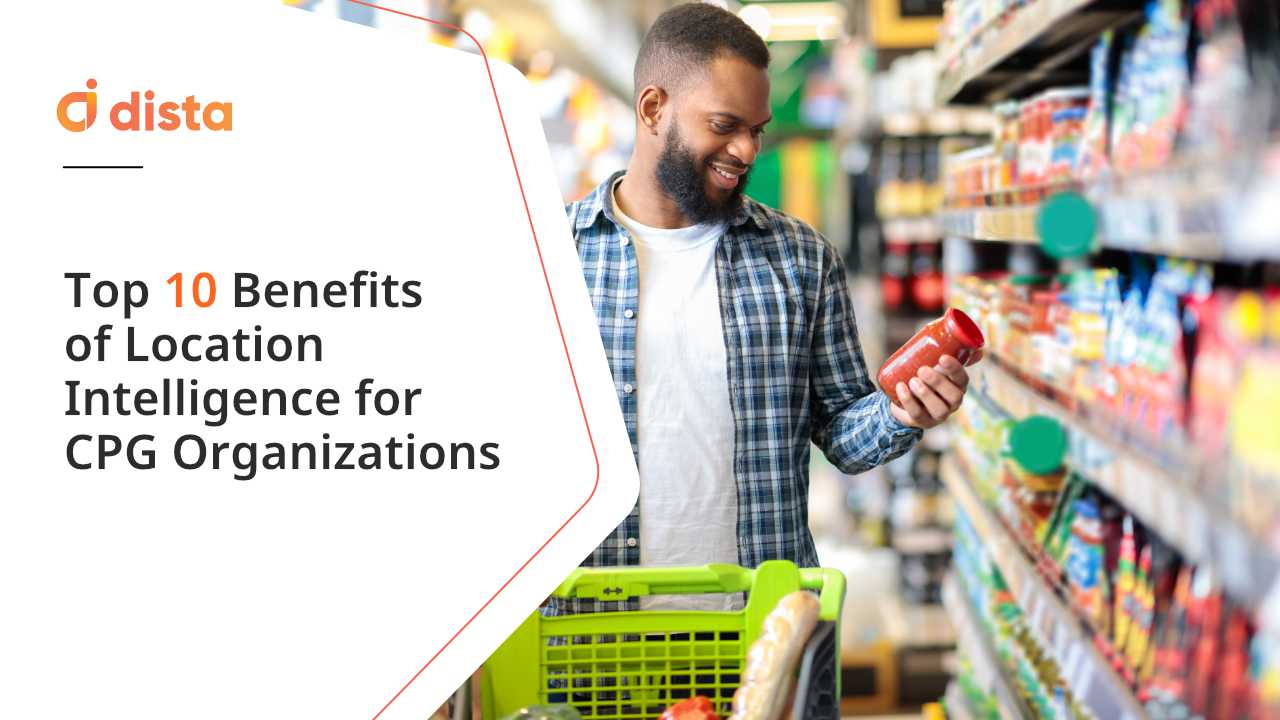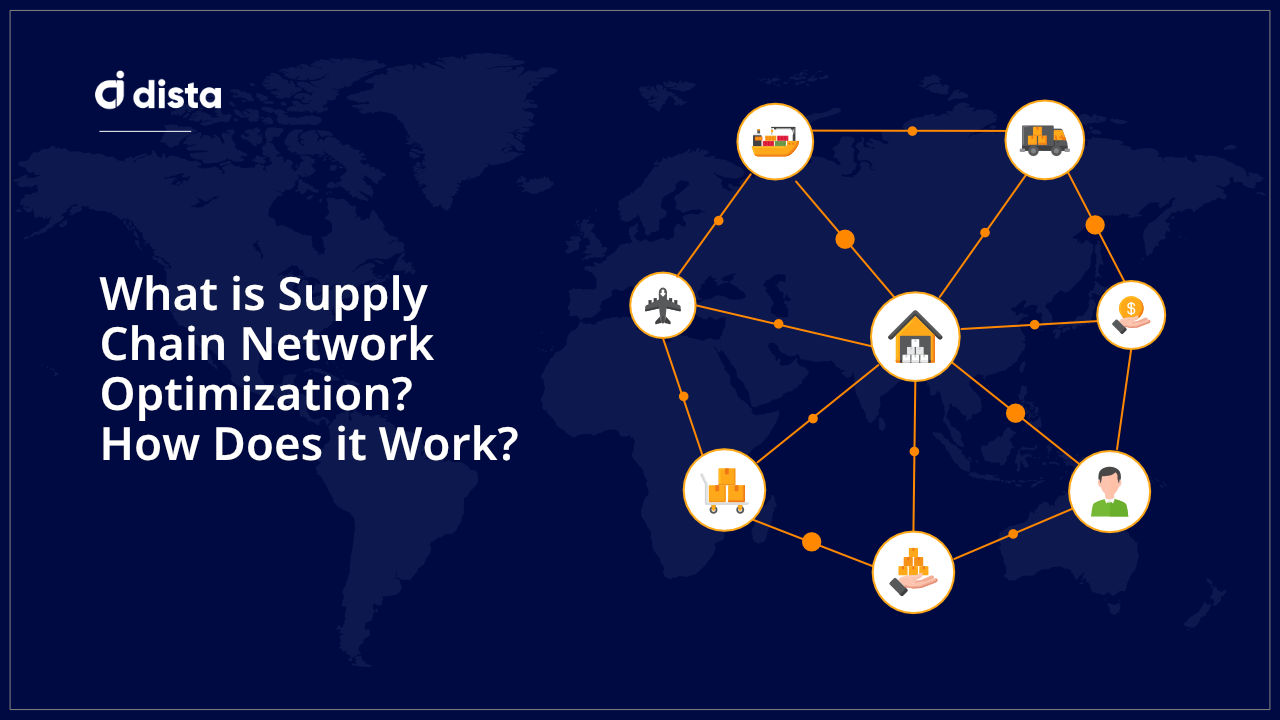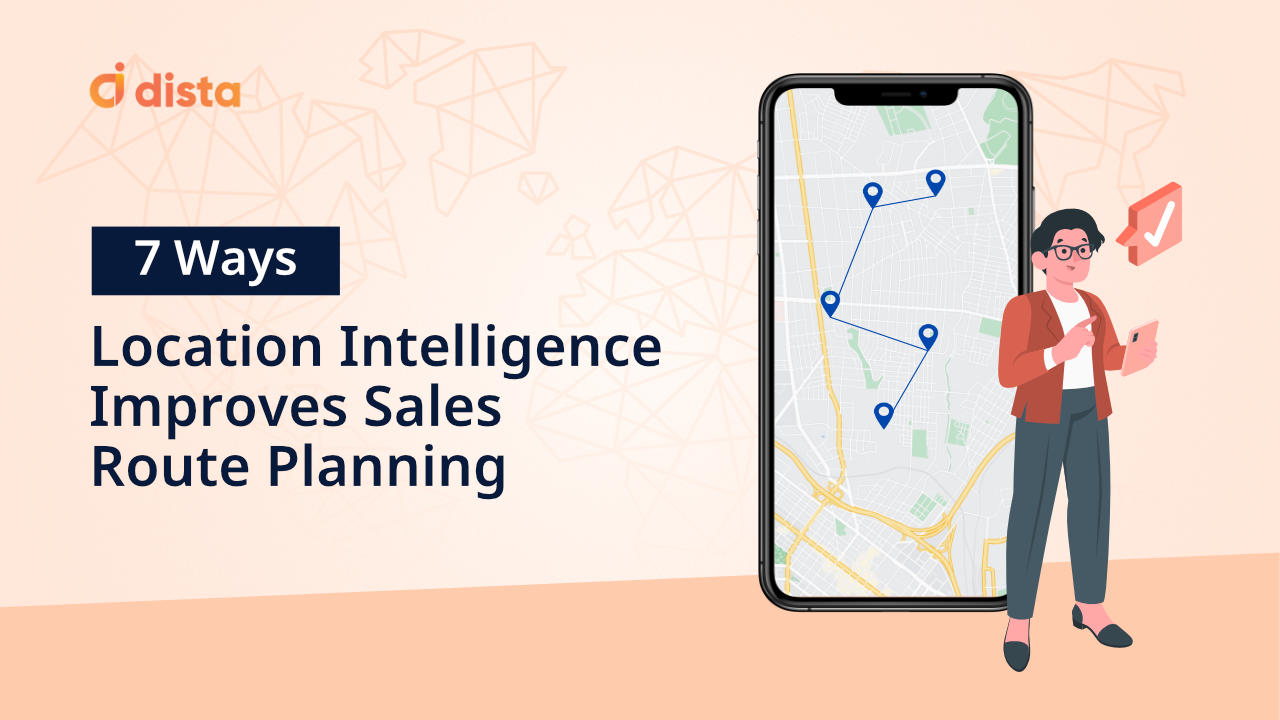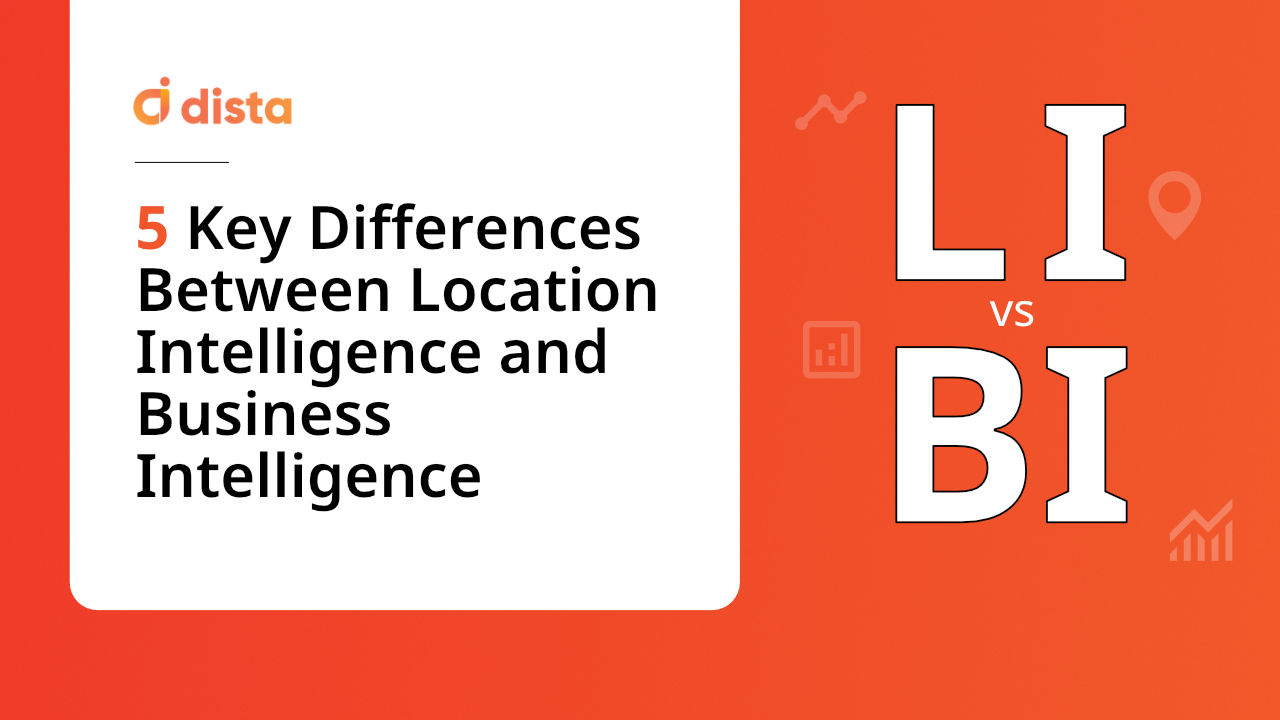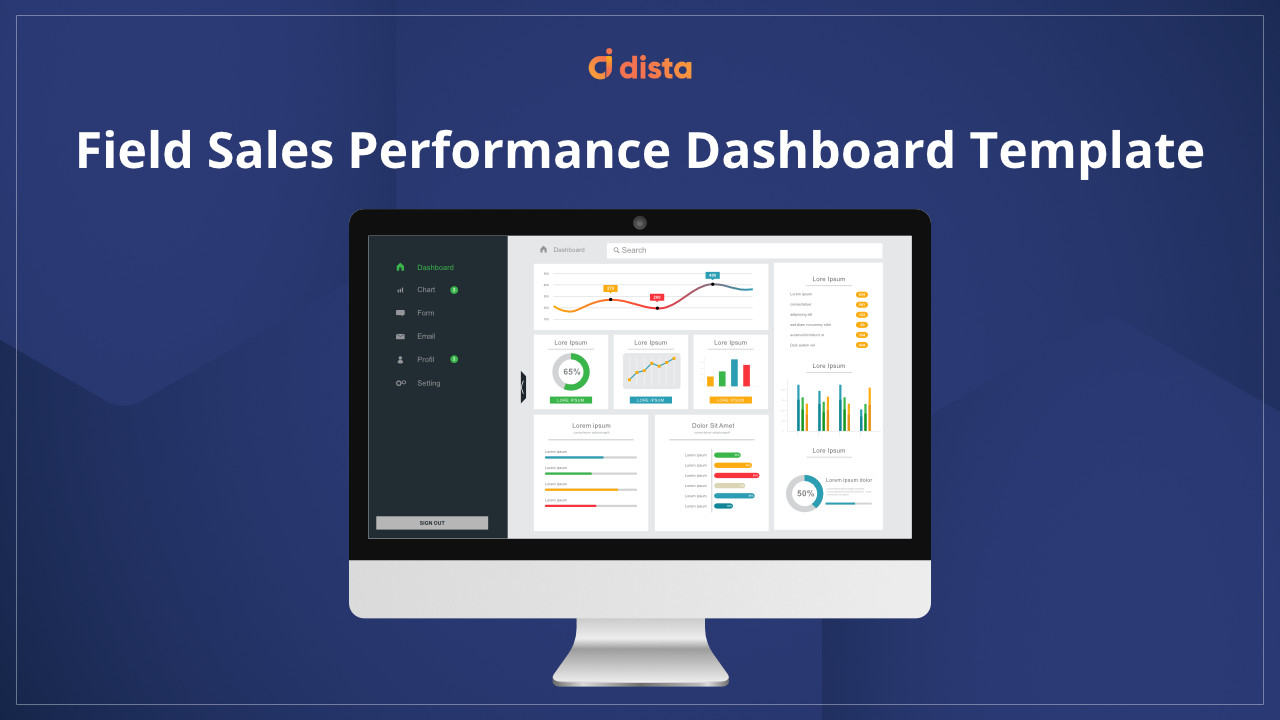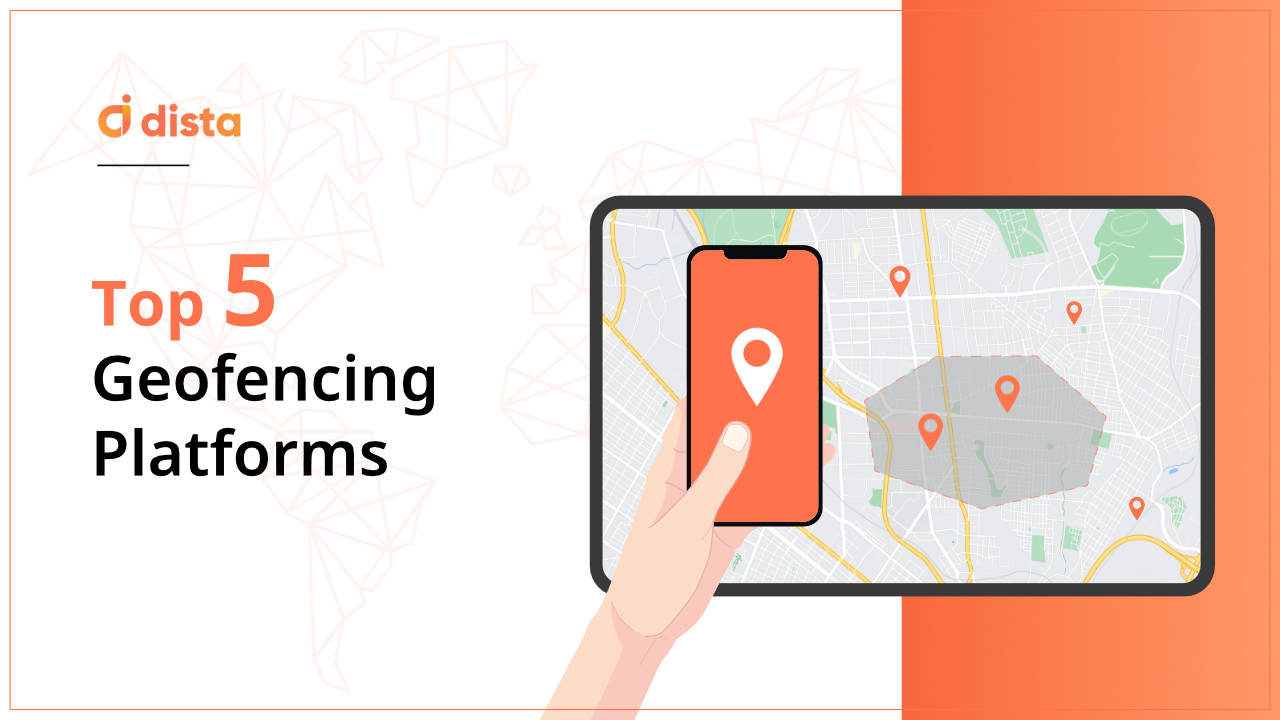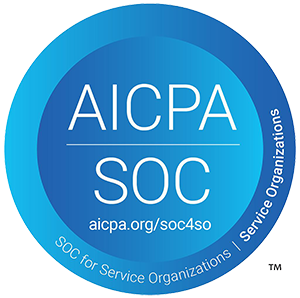Evolving consumer preferences, intense competition, and supply chain disruptions are significant challenges that CPG business leaders need to combat for running smooth operations. The CPG industry has witnessed a major digital transformation to address these issues more efficiently. Companies are leveraging AI/ML tools to meet growing consumer demand.
A robust AI-powered location intelligence platform empowers CPG leaders to leverage key spatial insights. They can design intelligent beat plans, enable omnichannel fulfillment, scale up deliveries, track field teams’ performance, and address many common use cases.
We’ve listed ten key benefits of applying location intelligence in the CPG industry.
Also Read: 8 Location Intelligence Trends for 2024
1. Optimize Territory Management
Poorly managed territories result in the inequitable distribution of sales reps. It reduces the number of sales visits, leads to missed opportunities, and increases the cost of operations.
Defining territories by area improves outside sales reps and customer alignment. Leaders can balance the workload distribution by assigning the best reps to valuable prospects identified within the territory. This boosts their customer engagement, increases sales visits, and improves chances of lead conversion.
CPG organizations can use sales territory management software to analyze location data, including zip codes, geographic boundaries, and critical points of interest (PoI). By leveraging geospatial analytics software, they can improve territory rebalancing, optimize resources, and expand customer coverage.
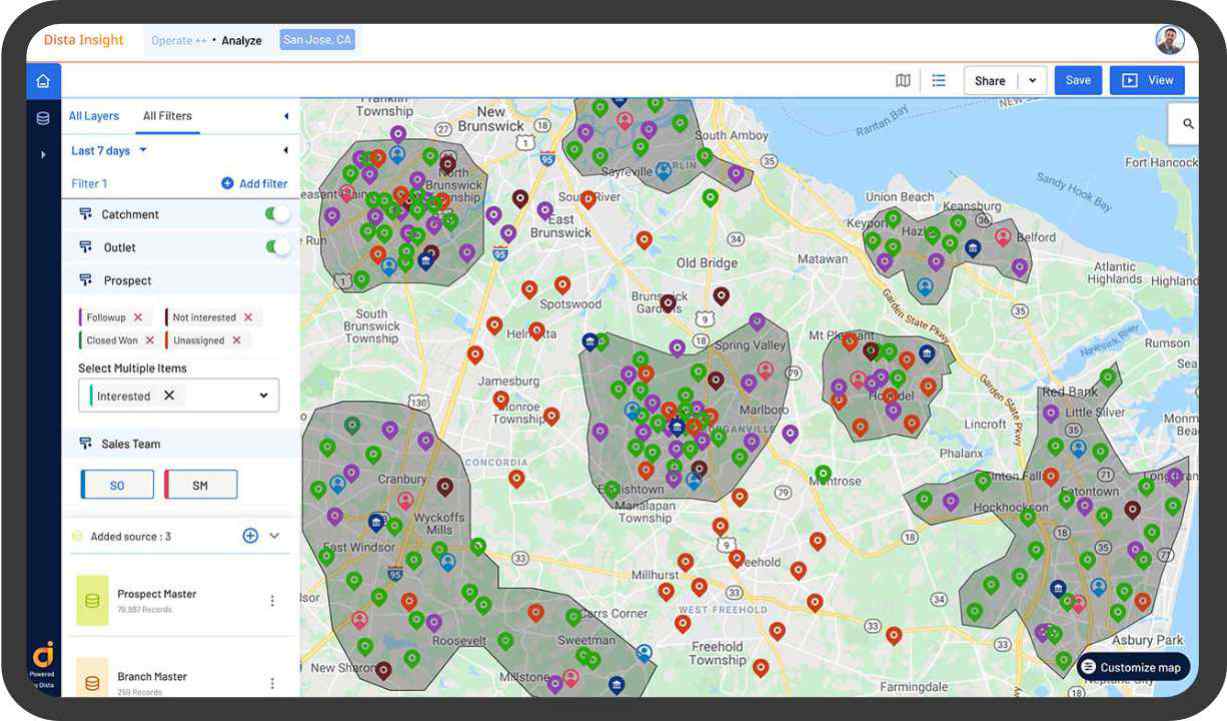
2. Boost Business Expansion
Inadequate market research, poor visibility into supply chain networks, and multiple third-party distribution channels are key challenges CPG firms need to address while planning business expansion strategies.
Location intelligence gives businesses deeper visibility into market dynamics, demographics, consumer behavior, and competition.
Geospatial analytics software like Dista Insight overlays multiple location and business data and provides an interactive map-based visualization. Businesses can identify and monitor high-demand, under-served areas and carve expansion strategies into newly identified markets.
3. Strengthen Supply Chain
Supply chains are the backbone of CPG operations, ensuring smooth movement of goods from warehouse to distributor to consumers. However, inefficient supply chain management disrupts delivery logistics, resulting in delays for order fulfillment.
CPG companies can leverage location intelligence to design high-performing supply chain networks. Using GIS software, leaders can run simulations by configuring business rules and identify the most optimal placement of warehouses and distribution centers.
By leveraging spatial patterns for demand, they can design efficient routes and schedule deliveries to cater to large order volumes.
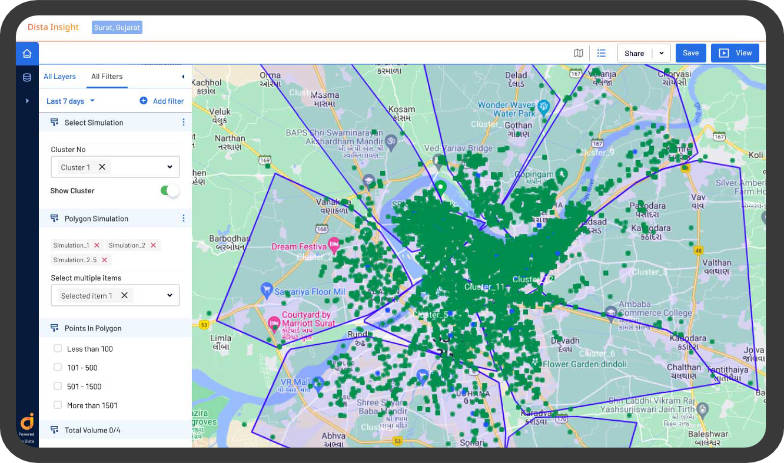
4. Location Intelligent Beat Plan
Efficient beat planning is crucial for CPG retailers and brands to maintain adequate stock levels of popular merchandise in stores and ensure timely replenishment.
Take for instance, a pharmaceutical company operates with hundreds of medical reps in the field. They need a beat plan that outlines daily tasks, routes, and field visits to boost sales coverage and maximize field productivity.
Managers can leverage location insights to create intelligent beat plans. It reduces time spent in transit by sequencing visits considering outside sales reps’ proximity, capacity, and availability.
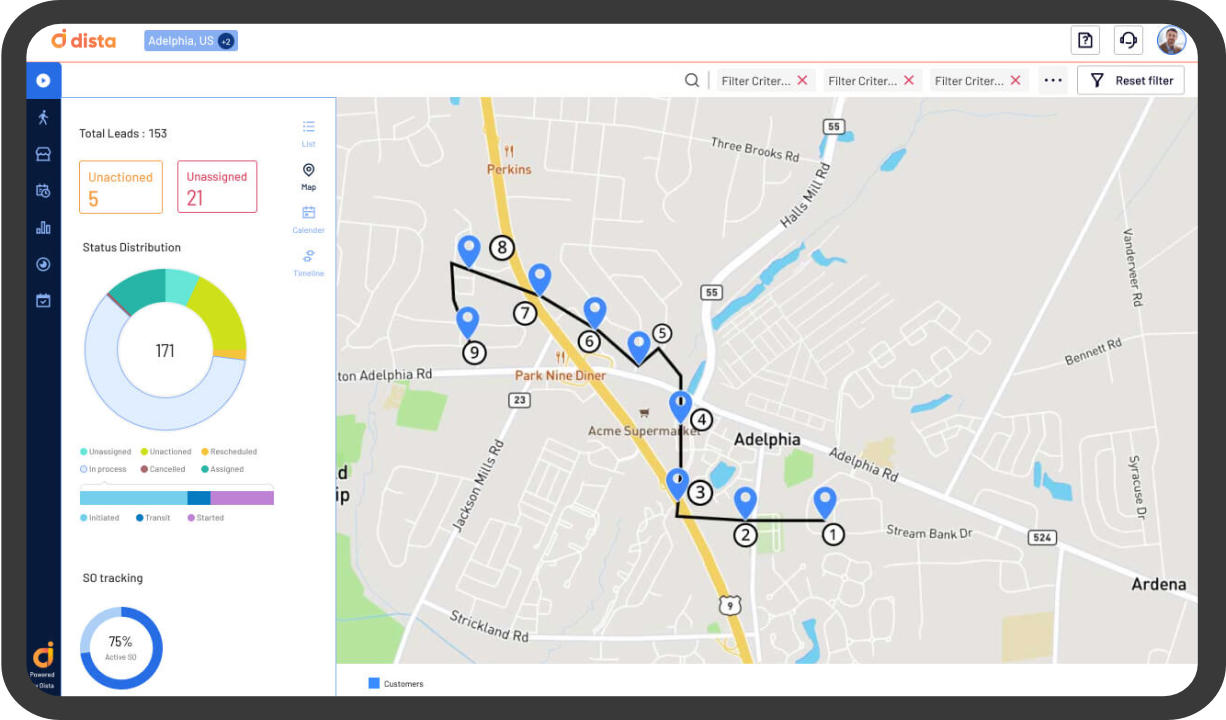
5. Enhance Site Selection
Major challenges for site selection include identifying consumer demand, population density, competitors, and other key location data that influence store placement. CPG organizations can leverage spatial analytics to improve their site selection.
Location intelligence software can evaluate consumer age, income levels, household size, and lifestyle preferences.
GIS software improves site visibility by plotting consumer demand, competition, and other spatial points of interest on a map to run simulations for optimal site selection. It helps unlock new markets and expand sales coverage by leveraging spatial data.

6. Improve Field Sales Tracking
CPG companies operate large field teams, making it challenging for managers to track and monitor individual reps. There is limited or no visibility into their real-time location and daily activities.
Firms can benefit from a single console that leverages geospatial analytics to organize and monitor their field staff. A field sales management software leveraging geodata provides end-to-end tracking of outside sales reps.
Managers get real-time status updates for the location and current tasks of individual reps. It enables sales activity capturing so field teams don’t have to worry about administrative tasks. They can focus on selling and engaging with customers.
7. Customize Marketing and Promotion
One of the key challenges CPG companies face is responding to the swiftly changing buying preferences. A study by Boston Consulting Group (BCG) concluded businesses that employ data-driven personalization can achieve a 20% increase in return on investment from their marketing efforts.
Leaders can leverage GIS software to analyze customer locations, buying patterns, order frequency, etc., for the target audience. Spatial analysis empowers marketers to boost personalized marketing and garner customer interest with brand loyalty programs. They can design promotional campaigns to deliver custom messages and provide exclusive discounts.
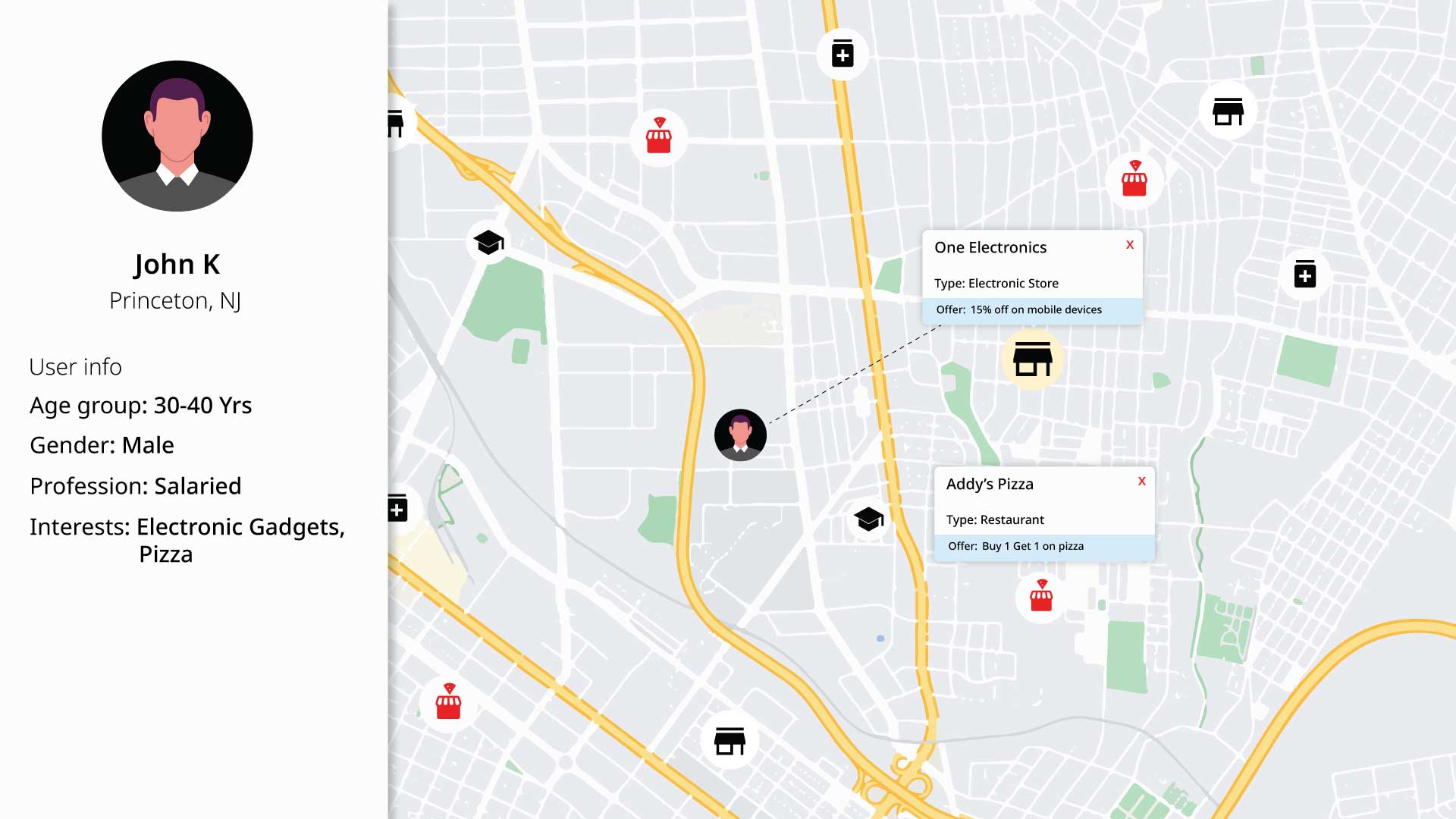
8. Enhance Delivery Management
Manual processes for freight management and reliance on legacy systems are major challenges affecting CPG companies’ operating efficiency. Growing consumer demand for fast-tracked deliveries further adds to these logistical challenges.
Enterprises can use delivery management software that leverages location intelligence to improve visibility into the order lifecycle. It analyzes spatial data, customer clusters, and delivery riders within defined territories to auto-allocate orders.
CPG companies can maintain promised SLAs by leveraging geospatial data and ensuring on-time deliveries.
9. Organize Inventory Management
Predicting customer purchase behavior presents a significant challenge, as economic circumstances, seasonal demand, etc, can influence order volume and frequency..
They can leverage spatial analytics to identify customer locations, delivery patterns, order frequency, and regional competition. Companies can plan and stock inventory based on location and cater to growing demand with optimum inventory levels.
10. Streamline Reverse Logistics
High cost of returns, multiple partners for returns processing, and longer process timelines are challenges that hinder smooth returns processing. CPG companies need scalable and customizable delivery management software to optimize reverse logistics.
Dista Deliver provides end-to-end order tracking for order returns. Customers can also choose preferred return slots, reschedule, and cancel their returns based on convenience. The software tracks every stage of returns while providing live status updates to consumers.
Final Thoughts
Harnessing geospatial insights empowers CPG leaders to explore new horizons for business expansion. The CPG landscape is dynamic, and with growing consumer demand, enterprises need to optimize their pricing, optimize resources, and streamline their supply chain to lower operational costs.
Location-driven insights enable CPG leaders to achieve long-term goals while maintaining sustainable operations.
Are you also looking to leverage the power of location intelligence? Dista’s product suite offers robust AI-powered software with custom features. Leverage spatial insights to drive the top line, streamline logistics, and elevate the customer experience.
Book a free demo today!

